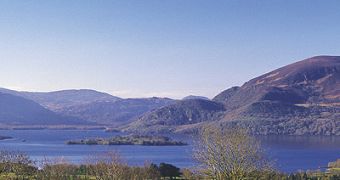An echo is a reflection of sound, arriving to the listener sometime after the direct sound.
Typical examples are the echo produced by the bottom of a well, by a building, or in a room, by the walls.
A true echo is a single reflection of the sound source. The time delay is the extra distance divided by the speed of sound.
If so many reflections arrive to a listener that he is unable to distinguish between them, the proper term is reverberation.
An echo can be explained as a wave that has been reflected by a discontinuity in the propagation medium, and returns with sufficient magnitude and delay to be perceived. Echoes are reflected by walls or hard surfaces like mountains.
When dealing with audible frequencies, the human ear cannot distinguish an echo from the original sound if the delay is less than 1/10 of a second. Thus, since the velocity of sound is approximately 343 m/s, a reflecting wall must be more than 16.2 m away from the sound source at this temperature for an echo to be heard by a person at the source.
Echoes may be desirable (as in sonar) or undesirable (as in telephone systems).
The name "echo" comes from the Greek nymph who had the job of talking incessantly to Hera, the Queen of the Gods, so that her husband, Zeus, wouldn't get caught in his numerous affairs. Hera caught on to Echo's trick and cursed her to only be able to say what others had just said - hence the word "echo". Famous artificial echoes are the Golkonda Fort of Hyderabad, India; the Whispering Gallery of St Paul's Cathedral, London, England; The Temple of Kukulcan ("El Castillo"), Chichen Itza, Mexico.
The most remarkable echo in the world is produced by the mountain lake Killarney, Ireland. A shout or a word is repeated by almost one hundred times and it sounds like a giant clarion.
The most famous cave in the US is the Mammoth Cave (central Kentucky), the longest in the world (591 km or 367 mi), crossed by the Green River. The walls of this cave turn the water's gurgle into sounds that remember the spatter of the raws and the echo of these sounds imitates the clang of a bell.
The human voice appears decomposed in successive accords, like arpeggios.
The Lake Teletskoye from Altai Mountains produces an impressive and powerful echo. A clarion produces there an echo of 107 decibels and a gun shot sounds with 109 decibels.
The human ear hears 8-10 repetitions of the echo, which prolong for 8 - 11 seconds. The sound of the engine boats can be heard at 6 km away and the sound of the sirens, amplified and repeated by the echo, persists for 20 seconds. Sometimes, the echo forms at 250 m away from the source of the sound and starts after 1.5 seconds from the emission of the sound.
Another peculiarity: the echo here seems to come from above, a phenomenon called "upper sonic mirage".

 14 DAY TRIAL //
14 DAY TRIAL //